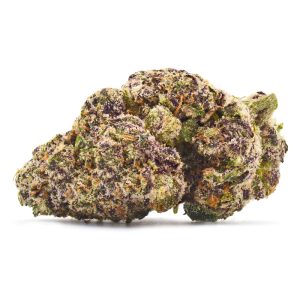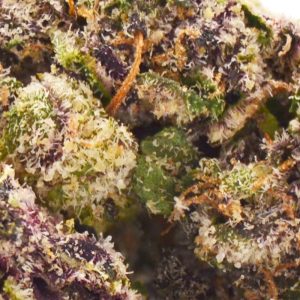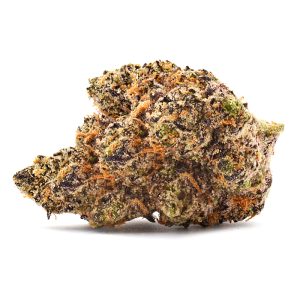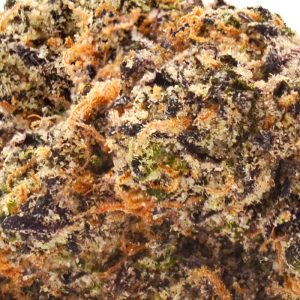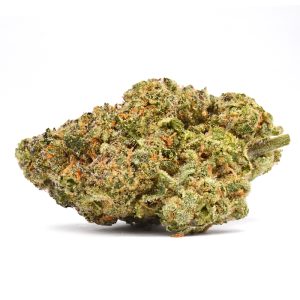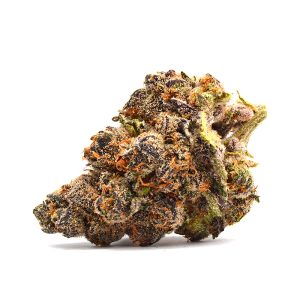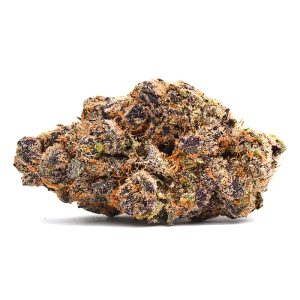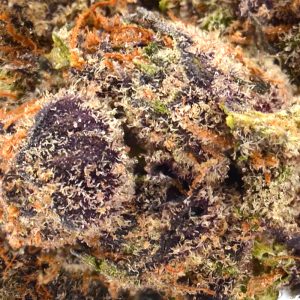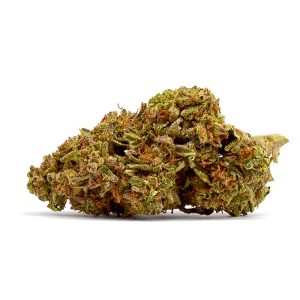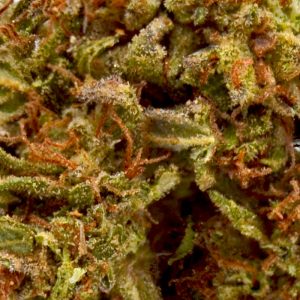The smell of lavender, freshly cut lemons, or ground pepper entices the senses, but do you know where it comes from?
Plants are rich in naturally occurring chemical compounds known as terpenes, which give them distinctive scents, colors, and flavors.
This article explains what terpenes are and why they are so important when considering a CBD hemp flower strain.
Last Update: June 29, 2023
Article Summary
- Terpenes are highly volatile aromatic compounds naturally present in CBD hemp flower strains. Terpenes give different CBD flowers their distinctive aroma, flavor and effects.
- The most common primary terpenes found in CBD flower are myrcene, pinene, limonene, caryophyllene, and linalool.
- Some CBD flower strains contain secondary terpenes, like humulene, terpinolene, nerolidol, guaiol, and camphene.
- Terpenes don’t produce a traditional “intoxication” but can contribute to feelings of calmness, relaxation, or energy.
- The terpene profile of a CBD flower strain can provide insights into its effects and potential therapeutic properties. For example, CBD flower strains dominant in myrcene typically have more sedative, relaxing effects, while limonene-rich strains have uplifting properties.
- Terpenes interact with serotonin and dopamine systems in the brain, potentially contributing to mood regulation and improved sleep.
- Terpenes may work together with cannabinoids to produce the entourage effect, enhancing the therapeutic potential of CBD flower.
- Different terpenes in CBD hemp flower have been studied for their anti-inflammatory, analgesic, neuroprotective, antimicrobial, and antiviral effects.
What Are Terpenes?
Terpenes are aromatic compounds that give CBD flower its characteristic aroma and flavor profiles.
You may have noticed that CBD flower strains differ in aroma, flavor, and appearance, and now you know that it all comes from the terpenes in a specific strain.
Terpenes are found throughout nature in plants, trees, herbs, and even bacteria. In plants, terpenes serve a number of different biological purposes. These aromatic chemicals are mainly used to deter predators or attract beneficial pollinators, but they also have other interesting uses.
On a large scale, in places such as the Amazonia, terpenes actually help to create a microclimate by serving as “cloud seeds”. As forest temperatures rise, the trees “sweat”, releasing water vapor and water-soluble terpenes into the atmosphere.
In the sky, terpene molecules provide a structure for raindrops to form upon, which leads to the formation of shade-giving clouds and rain. It’s pretty astonishing to learn that plants use terpenes as biochemical messengers and weather modifying agents.
Terpenes are also found in many everyday scented products, like perfumes, soaps, shampoos, and certain foods. Manufacturers isolate terpenes and create scents for these products.
To date, scientists have identified more than 50,000 unique terpenoids. Out of those, 150 different terpenes are present in the cannabis plant alone. Sometimes used interchangeably, terpenes and terpenoids mean different things. A terpenoid is an oxidized terpene, which is formed when the plant dries, while terpenes are the natural form present naturally in the plant [1].
Categories of Terpenes
Science classifies terpenes based on the number of isoprene units the molecule contains. An isoprene unit is the fundamental building block of terpenes, with larger ones being assembled from several isoprene units.
Depending on the number of isoprene units in the terpene molecule, these compounds are grouped in the following categories:
- Monoterpenes: Consist of two isoprene units and include most primary terpenes found in CBD flower like limonene, myrcene, linalool, pinene, geraniol, and more.
- Sesquiterpenes: Made out of three isoprene units and include humulene, caryophyllene, farnesol, and others.
- Diterpenes: Composed of four isoprene units and include cafestol, taxadiene. Diterpenes form the foundation for further development of compounds like retinol and phytol.
- Sesterterpenes: This terpene group has five isoprene units and 25 carbons.
- Triterpenes and tetraterpenes: Triterpenes have six isoprene units, while tetraterpenes have seven.
- And much more!
CBD hemp flower contains an abundance of monoterpenes, created inside its trichome glands. Their primary functions are protection against pests and animals that want to consume the plant or pollination activity by attracting certain insects.
As highly volatile compounds, terpenes can easily evaporate during the drying process. To preserve as many monoterpenes as possible, the drying process is performed in a controlled environment. Once dried and cured, CBD flowers have a higher concentration of sesquiterpenes, like caryophyllene, because they are more stable and don’t break down that easily.
The natural production of terpenes in CBD flower increases with light exposure but decreases with soil fertility, particularly lack of nitrogen. Most terpenes and terpenoids are used as food additives because they are Generally Recognized as Safe (GRAS) by the FDA.
Now that you know more about terpenes in nature, let’s go over some of the therapeutic properties of these incredible chemicals found in CBD hemp flower.
Benefits of Terpenes: How Do They Affect the Human Body?

The way terpenes affect the human body when consumed as part of CBD flower is a bit of a mystery.
Terpenes primarily interact with the serotonin and dopamine systems in the brain. These two systems are in charge of regulating mood, which is why terpenes may help you feel more at ease and achieve better sleep [2].
Scientists continue to explore the benefits of terpenes in CBD flower and the main hypothesis is that terpenes work together with cannabinoids to produce the individual effects associated with certain CBD flower strains.
It’s assumed that primary and secondary cannabinoids (CBD, CBG, CBN, THC) and terpenes work synergistically to increase the therapeutic potential of CBD flower, which is known as the “entourage effect”.
This means that terpenes are the strongest factors in the aroma and flavor palette of a strain, but can also boost and alter the effects of other cannabinoids and terpenes.
Individually, terpenes have been studied (in vitro, animal and clinical trials) for their anti-inflammatory, analgesic, neuroprotective, antimicrobial and antiviral effects, among others. Most terpenes have potential antimicrobial and antiviral properties, meaning, they can combat potentially harmful bacteria and viruses [3].
Other research studies have found that compounds like myrcene, pinene, limonene, linalool, beta-caryophyllene and alpha-humulene may have potential anti-inflammatory properties [4].
The two most common effects of terpenes are bringing the user into a sedated or calming state. Therefore, if a strain contains the terpene myrcene, it’s expected to produce relaxing effects, while having limonene in the mix may contribute to the strain’s uplifting and stimulating effects.
A great example of this is linalool, found in both CBD flower and herbs like lavender and basil. This terpene can exhibit near instantaneous relaxing effects that can help alleviate stress-related symptoms of anxiety.
Cannabimimetic Activity of Terpenes
Some studies have found that terpenes, like caryophyllene, alpha-humulene, linalool, beta-pinene, and geraniol have cannabimimetic activity. This means that terpenes in CBD flower also produce cannabis-like effects that selectively enhance the activity of cannabinoids. These findings are not official, but support the theory of the entourage effect [5].
The research paper published in Nature also showed that terpenes are potentially antinociceptive or have an effect on pain perception. The study revealed that the antinociceptive effects appear to be regulated through the CB1 cannabinoid receptor. Blocking the CB1 receptor in mice resulted in blocking terpenes’ pain-relieving effects [5].
The study also revealed other independent mechanisms through which terpene may induce their effects rather than a CB1 dependent one. An interesting finding is that the terpenes showed a greater effect on pain when combined with a cannabinoid agonist. This could be a further indication of the “entourage effect” [5].
With that said, everyone reacts differently to a CBD flower strain. While the strain’s terpene profile is a good indicator of what to expect, you can’t know with certainty how it will make you feel.
Do Terpenes Get You High?
Terpenes don’t get you intoxicated in the traditional THC sense, but you’ll definitely experience calmness, relaxation, or feel energized after consuming them.
In a scientific way, terpenes are considered “psychoactive” because they affect the brain by altering the effects of cannabinoids like THC.
This is why it’s recommended to carefully pick a strain based on its terpene content and not its cannabinoid content. Because of this connection between cannabinoids and terpenes, it’s advised to use whole plant or full spectrum CBD products.
And, CBD hemp flower is a great opportunity to experience the “entourage effect” in its fullness. Studies support the theory that combining cannabinoids is more effective in certain cases (pain management) than taking them separately [6].
Most Common Terpenes in CBD Hemp Flower
Here’s a rundown of the most common terpenes in CBD flower and their effects:
Myrcene
Myrcene is a primary monoterpene found most abundantly in CBD flower. Also found in mango, lemongrass, thyme, hops, and ylang-ylang, this terpene is best known for its sedative effects. Like other terpenes, myrcene has a synergetic effect with cannabinoids.
According to research, myrcene exhibits sedative and naturally relaxing properties that are partially responsible for the stress relieving effects of certain CBD flower strains [7].
Myrcene-rich CBD hemp flower strain: Sour Candy Kush CBD flower, Purple Punch CBD flower
Aromatic Profile: Dank or humid, earthy and herbal citrus tones, with tropical fruit flavors and aroma.
Potential Therapeutic Effects:
- Sedative
- Anti-inflammatory
- Antibiotic
- Antispasmodic
- Relaxing
- Analgesic
Read more here: Myrcene Benefits | Hemp Terpene Guide
Limonene
Limonene is the second most abundant terpene found in nature and is extremely common in CBD flower strains. Also found in lemon, lime, grapefruit, and orange peels, limonene
This citrusy and stimulating aromatic compound has incredible antimicrobial, uplifting, and antidepressant-like effects [8].
Limonene-rich CBD hemp flower strain: Purple Punch CBD flower, Hercules CBD flower
Aromatic Profile: Tropical citrus, lemon, lime, orange, grapefruit aroma, and flavor
Potential Therapeutic Effects:
- Antifungal
- Antibacterial
- Increases focus and attention
- Stimulation
- Anti-depressant
- Anti-anxiety
Read more here: An overview of Limonene: The Most Useful Terpene
Pinene
Pinene is the most abundant terpene in nature. Huge amounts of alpha-pinene are produced and released into the atmosphere by the Earth’s large conifer forests.
Its sharp scent is reminiscent of walking into a fresh pine forest, and is noticeable on the first sniff of a CBD flower bud. Pinene has been studied for its potential to combat inflammation [10].
Pinene-rich CBD hemp flower strains: Hercules CBD flower, Crunch Berries CBD flower
Aromatic Profile: Piney, earthy green, woodsy, herbal and floral tones
Potential Therapeutic Effects:
- Anti-inflammatory
- Antibacterial
- Anti-anxiety
- Bronchodilator
Read more here: Understanding Pinene: A Guide to Cannabis Terpenes
Guaiol
Another terpene with a strong pine scent, guaiol has been researched for its potential anti-inflammatory effects.
Guaiacum, a plant with high concentrations of the terpene guaiol, has a long history of therapeutic use. First brought to Europe from the Dominican Republic by Spanish colonizers, the plant was used as a cure for syphilis, sore throat, gout, rheumatism, and more.
Research also shows that the terpene has incredible antimicrobial and insecticidal properties. This organic compound is also found in cypress, pine, and conifer trees.
Guaiol-rich CBD hemp flower strains: Afghani Maple CBD flower
Aromatic Profile: Piney, woodsy, and rose petal undertones
Potential Therapeutic Effects:
- Anti-inflammatory
- Digestion support
- Analgesic
- Antispasmodic
- Antibacterial
- Antioxidant
Camphene
Camphene is a minor terpene, which means it’s not typically present in most strains. Its aroma has a dank pungency reminiscent of a wet forest floor in spring and is generally considered kind of a “funky” smell. This terpene is also found in lavender, sage, nutmeg, ginger, valerian, and rosemary.
In the past, this terpene has been used to treat bacterial and fungal infections and was considered a helpful remedy for eczema, psoriasis, and other inflammatory skin conditions. Research today indicates that the terpene could reduce cholesterol and triglyceride levels, factors important for regulating cardiovascular health [11].
Aromatic Profile: Camphor-like aroma, dank, musky, with subtle sweet undertones
Potential Therapeutic Effects:
- Antiviral
- Antifungal
- Expectorant
- Atmospheric antiseptic
- Anti-edematous
- Bactericidal
Humulene
Humulene is a common terpene found in many CBD hemp flower strains and has a dank, humid scent similar to decaying trees. Its aroma is most notably identified in hops used to make beer and has a unique appetite suppressing effect. It’s also found in basil, black pepper, cloves, peppermint, and sage.
Humulene-rich CBD hemp flower strains: Crunch Berries CBD flower, Purple Punch CBD flower.
Aromatic Profile: Dank, woodsy and pungent, humid scent.
Potential Therapeutic Effects:
- Analgesic
- Antibacterial
- Anti-inflammatory
- Anti-oxidant
- Appetite suppressant
Read more here: Humulene Health Benefits, Uses, and Best Strains
Terpinolene
Terpinolene is an abundant terpene found throughout nature in many different fruits and herbs, including cumin, apple, pine, rosemary, tea tree oil, and sage. It has a unique sweet, earthy, herbal aroma with floral and citrus undertones.
Although it isn’t typically the highlighted or main terpene in a strain’s profile, this compound has an incredible list of health benefits. Research shows that terpinolene is a central nervous depressant, so in tiny amounts, it may help support sleep and reduce anxiety [12].
Terpinolene-rich CBD hemp flower strains: Hercules CBD flower.
Aromatic Profile: Aromatic pine-like, sweet citrus and floral tones associated with flavors from nutmeg, tea tree, lilac, apples, and cinnamon.
Potential Therapeutic Effects:
- Naturally calming anti-stress
- Antimicrobial
- Antifungal
- Antioxidant
Nerolidol
Nerolidol is a unique terpene that gives fresh CBD hemp flower natural protection against bacteria, fungi, and parasites. Its aroma is associated with many herbs and plants used in traditional Chinese medicine, such as ginger and lemongrass.
Despite being a powerful and all-natural pesticide agent, this terpene is safe for consumption. It’s commonly found in topical therapeutics thanks to its benefits on the skin. Nerolidol is also found in jasmine, citrus peels, tea tree oil, and lavender. It has been studied for its antioxidant properties and potential anti-inflammatory effects [13].
Aromatic Profile: Citrus-like and woodsy scent associated with pleasant floral aromas from ginger, citronella, orange, jasmine, and tea tree.
Potential Therapeutic Effects:
- Anti-bacterial
- Antifungal
- Anti-parasitic
- Insecticidal
- Anti-lice
- Anti-anxiety
- Improves transdermal administration of medicines
- Naturally sedative and calming
What Does The Terpene Profile in CBD Flower Tell You?
The terpene content in a specific CBD hemp flower can tell you a lot about that particular strain’s effects.
For example, high levels of the terpene beta-myrcene (.22%) give Hawaiian Haze Hemp Flower a refreshing, calming, and uplifting effect.
You’ll notice that Hawaiian Haze CBD flower spreads a pine-like aroma similar to conifer forests. This is thanks to its high pinene content (.11%), which has naturally energizing properties that give strains their sativa status. Boasting dense and sticky buds, Hawaiian Haze CBD flower is a high CBD strain you can use to find relief from everyday stress, aches and pains.
Special Sauce CBD Hemp Flower is another high CBD strain with a unique terpene profile. The laboratory analysis indicates that it’s characterized by high concentrations of both pinene and guaiol terpenes.
A terpene profile highlighted by both pinene and guaiol typically offers anti-anxiety properties that can help relax the muscles and improve focus and concentration.
Thanks to its unique profile of terpenes and incredible CBD levels, Special Sauce is a highly sought-after and valued CBD strain among CBD flower users.
CBD Hemp Flower For Sale Online
Premium CBD hemp flower strains are typically found only in medical marijuana dispensaries. Mr. Hemp Flower is here to change that narrative by offering top-shelf CBD flower to people across the country.
Our CBD strains contain only trace amounts of THC (less than .3%), the main psychoactive substance in cannabis, and are available for purchase online. We are the leading distributor of CBD flower in the nation, providing organically grown hemp flower in local North Carolina, Oregon, and Washington farms.
Thanks for reading! Let us know what you think about terpenes and tell us about your experiences with different CBD Hemp Flower strains in the discussion section below.
Also, don’t forget to bookmark our site and connect with our fast-growing community on social media so that you’re always just a click away from deals on CBD Hemp Flower and more great content like this.
FAQs on Hemp Terpenes And Their Benefits
What do terpenes do for your high?
Terpenes are non-intoxicating, so they won’t cause a psychoactive experience in the traditional sense. But, anecdotal evidence and preliminary research show a connection between terpenes and THC [14].
Some people have noticed that the presence of terpenes in the product alters their experience. For example, THC flower or CBD flower tend to provide a more flavorful experience compared to vape pens because hemp flower has a higher concentration of natural terpenes.
Is smoking terpenes safe?
Smoking terpenes in their pure, concentrated form can be dangerous, especially if consumed in high doses. Inhaling these potent molecules through vaping or smoking can cause allergies or damage and irritation to the lungs.
The only way to safely inhale terpenes is to combine them with cannabinoids and consume strictly in a low dose to avoid toxicity.
Will terpenes show up on a test?
No, you’re safe with these compounds when it comes to drug testing. Only cannabinoids like THC and its isomers will appear on a test.


